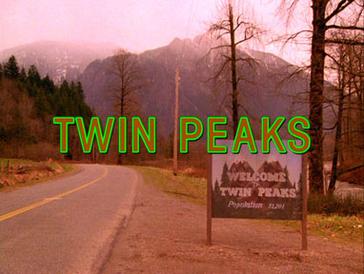(Photo courtesy of ChuckyDarko, captured from the Twin Peaks Season One Region 2 DVD. Reduced version made and uploaded by TAnthony., Fair use, https://en.wikipedia.org/w/index.php?curid=7622585) “‘Twin Peaks’ was considered unique for its time.”
Riley Fontana
Connector Editor
“Twin Peaks” was a TV show in the 1990s created by David Lynch that captured America like nothing that came before it. Shawn Driscoll and Patrick Lochelt, adjunct professors at UMass Lowell, set out to educate students on the cultural phenomenon. On Friday, March 17th, they held a seminar for students interested in the show created by Lynch.
Starting their event off with a presentation on “Twin Peaks,” audience members got to see insight from those who had witnessed the first airing. Driscoll spoke about his personal experience of being in high school and how he watched the show capture audiences. “April 8th, 1990. The greatest question on many minds was ‘Who killed Laura Palmer?’” Laura Palmer is one of the main characters in “Twin Peaks.”
For the audience to understand exactly why “Twin Peaks” captured America the way it did, what was on television at the time had to be established. “The television of the 1990s was minimal. Not a lot of shows out there doing something [unique],” said Driscoll on shows such as “Dallas” and other famous soap operas. “Twin Peaks” was doing something new, which was having weekly hooks that had not been seen on television before.
Why was “Twin Peaks” so influential? Because it was packed with firsts for television. Not only did it venture into surrealism unlike anything else on the air at the time, but it introduced Denise, a transgender woman. “She was the first transgender character who is not the villain or a victim, or played as [comedic relief] either,” said Driscol on the David Duchovny character.
Lynch captured the attention of American viewers by creating surrealism and absurdity on television that had never been seen before. The show’s influence can be seen everywhere on modern television, from “Stranger Things” to “Gravity Falls” and even “Buffy the Vampire Slayer.” “Without ‘Twin Peaks,’ you don’t have ‘The X-Files,’ ‘The Sopranos,’ ‘Deadwood’ or ‘Breaking Bad,’” said Driscol on the show’s lasting influence. “The most talented television writers cite ‘Twin Peaks’ as inspiration.”
Not only is “Twin Peaks” influence seen in show writing, but in homage to shows such as “Saturday Night Live,” “The Simpsons,” and “Psych” who have all done skits on the show. Most of these homage episodes don’t delve into the story of “Twin Peaks,” but more into the absurdity of it. “Let’s highlight how strange it is,” said Lochelt on these parodies.
While “Twin Peaks” is a show known for just how weird it can be, which both Driscoll and Lochelt commented on, it does have a deep-seeded plot. It was a serialized drama sprinkled with humor and absurdity, but unlike more modern shows, viewers had to wait to see what happened next. “This is not a show like ‘Law and Order.’ It’s not just a dead body with [a] resolve in 40 minutes,” said Lochelt. The show left viewers thoroughly analyzing the latest episode as they waited for the next episode to be aired.
The event wrapped with a viewing of the pilot episode of “Twin Peaks,” and the audience of students was entranced. Some whispered to their friends during certain scenes, while others took notes on early theories they had. Although “Twin Peaks” may be a product of its time, Driscoll and Lochelt feel it is an important piece of American pop culture that anyone can enjoy and learn from. Driscoll left this advice for future viewers of the show who regularly practice binge-watching: “[T]ake your time with the show. If you’re going to binge-watch it, watch it with pacing. Take the time to absorb the story.”




